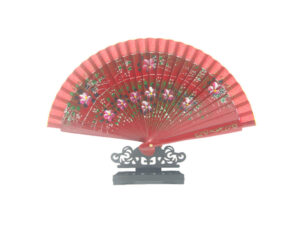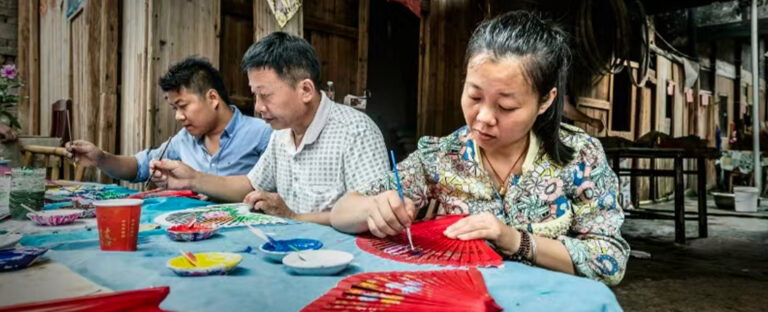RECENT POSTS
Share:
- August 6, 2025
Table of Contents
The Spanish fan is more than a practical tool for cooling—it embodies centuries of culture, craftsmanship, and silent expression. Originating in Spain during the 16th century, the Spanish fan has evolved from a foreign novelty into an iconic symbol of Spanish heritage. Today, it continues to hold aesthetic, historical, and cultural significance across the world.

1. Origins and Early Development of the Spanish Fan
a. From Asia to Spain
Although fans existed in ancient civilizations such as Egypt and Greece, the folding fan—specifically the one we now associate with the Spanish fan—was introduced to Europe from Asia.
Spanish and Portuguese traders brought folding fans from Japan and China in the 1500s, where they were quickly adopted by the European aristocracy. Spanish craftsmen soon adapted these designs, incorporating native motifs, religious symbolism, and local materials.
b. Adoption by the Spanish Nobility
By the 17th century, the Spanish fan had become a status symbol among noble families. Often made from ivory, silk, and lace, fans were not only functional but decorative—featuring religious scenes, floral patterns, and gold detailing. Spanish fan makers began to gain recognition for their artistry, especially in cities like Seville and Valencia, where skilled artisans emerged to meet the growing demand.
2. The Cultural Role of the Spanish Fan
(1) Language of Its Own
In addition to its aesthetic value, the Spanish fan became a subtle form of communication. In conservative societies where open flirtation was discouraged, women developed a silent language using fan gestures to convey emotions and intentions.
For instance, fanning quickly could indicate impatience or disinterest, while resting a fan on the cheek could signal agreement or affection. This unspoken “fan language” became widely understood in social circles of 18th and 19th-century Spain.
(2) Integration into Flamenco Culture
In the 19th century, the Spanish fan found a prominent role in flamenco dance. Dancers began using large, dramatic fans—called pericón—to add rhythm, flair, and storytelling to their performances. This form of fan manipulation requires great control and precision, making it both an expressive and technical element of the dance. Today, the fan is still taught in flamenco schools and remains a key visual element in many traditional performances.
3. The Craftsmanship Behind the Spanish Fan
1) Traditional Methods and Materials
Authentic Spanish fans are crafted using traditional techniques passed down through generations. Each fan typically consists of multiple components: ribs (or sticks), a guard, and the fabric or paper leaf. The wooden ribs are often carved by hand, while the leaf is painted, embroidered, or printed. Materials range from sandalwood and rosewood to silk, cotton, and high-quality paper. Producing a single fan can take several hours, depending on the complexity of the design.
2) The Industry Today
While handmade fans remain a hallmark of quality and tradition, the Spanish fan industry has also adapted to modern manufacturing practices. Contemporary makers use laser-cut wood, digital printing, and even recycled materials to meet both environmental standards and growing global demand. Despite technological advances, traditional craftsmanship remains highly valued—particularly in export markets such as France, Japan, and the United States.
4. The Global Popularity of the Spanish Fan
a. Fashion and Pop Culture Influence
In recent years, the Spanish fan has gained attention in global fashion. Designers have reintroduced fans as statement accessories on runways and red carpets. In film and theater, the fan is frequently used as a prop to evoke elegance, tradition, or romance. Its visual impact and versatility have helped it transcend its original cultural context to become a globally recognized symbol of grace and style.
b. Cultural Preservation and Recognition
To preserve the art of Spanish fan making, Spanish cultural institutions have launched initiatives to promote education and heritage. Some regions now offer training programs for young artisans, while museums across Spain host exhibitions of antique and contemporary fans. The growing interest in sustainable, handmade goods has further boosted appreciation for traditional fan craftsmanship.
5. Conclusion
The Spanish fan is a remarkable blend of beauty, function, and cultural significance. From its Asian origins to its reinvention as a Spanish icon, the fan has served as a tool of expression, elegance, and tradition. Its role in flamenco, social communication, and fashion demonstrates its versatility and lasting appeal. As the industry continues to evolve with modern technology and sustainability practices, the Spanish fan remains an enduring symbol of Spain’s rich artistic legacy.
0


